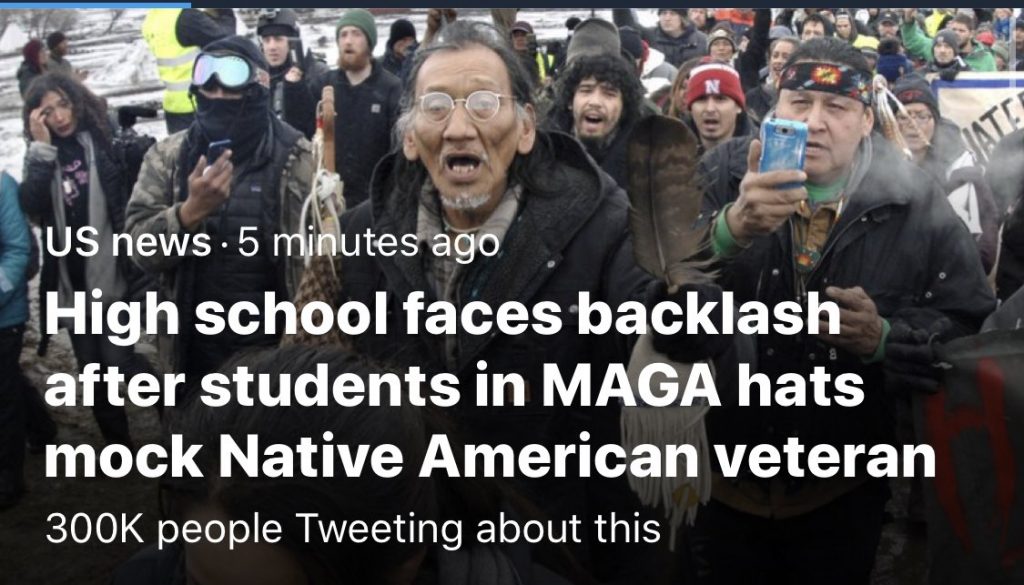It seemed to be the video image of the weekend: the “stand-off” between a teenager with a “Trump-cap” and a drumming Indian activist. The media talked about racism and shame about it, but in reality the story is much more fabricated, as it turns out.
It happened Friday at the Lincoln Memorial in the US capital Washington, but the video surfaced on social media on Sunday. This shows a tense situation in which a teenager with a MAGA hat (“Make America Great Again”) President Trump’s slogan looks defiantly at an old Indian man while other young people shout.

The result: outrage around “racism” and challenging behaviour against an elderly man of an ethnic minority and the like. According to new, longer video footage of the incident that the CNN channel received, however, a different story preceded.
It turns out that the group of which the “challenging young man” Nick Sandmann was a part of, consisted of students from a Catholic school in Kentucky who participated in an “March for Life” event in Washington. At the Lincoln Memorial, however, the group stumbled upon black men, called Hebrew Israelites, who took offence at the MAGA hats and the young people started to scold while waiting for an bus to come and pick them up.
The youths would also have begun signing slogans about their “school” and the atmosphere became grim, but it did not lead to violence, but to the minute-long stand-off between Sandmann and the old Indian man and former Vietnam veteran Nathan Phillips who was in the melee. involved. According to Sandmann he was afraid and it was not the intention to provoke the Indian man. Phillips sees that differently and says that the teenager deliberately prevented him from leaving.
What was entirely fake, the Indian veteran confronted the children of the Catholic school in Kentucky. Thus meaning he wanted to get a confrontation with the students.
In any case, the longer video does not really make any difference about what exactly happened in Washington. However, the incident is a warning to cautiously deal with video images that sometimes show only a one-sided view of reality.

